
The Standard Motor Company Limited was a motor vehicle manufacturer, founded in Coventry, England, in 1903 by Reginald Walter Maudslay. For many years, it manufactured Ferguson TE20 tractors powered by its Vanguard engine. All Standard's tractor assets were sold to Massey Ferguson in 1959. Standard purchased Triumph in 1945 and in 1959 officially changed its name to Standard-Triumph International and began to put the Triumph brand name on all its products. A new subsidiary took the name The Standard Motor Company Limited and took over the manufacture of the group's products.
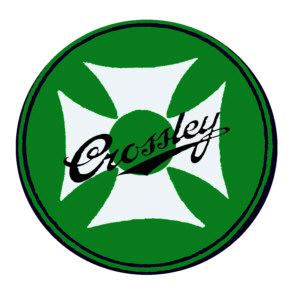
Crossley Motors was an English motor vehicle manufacturer based in Manchester, England. It produced approximately 19,000 cars from 1904 until 1938, 5,500 buses from 1926 until 1958, and 21,000 goods and military vehicles from 1914 to 1945.
Armstrong Siddeley was a British engineering group that operated during the first half of the 20th century. It was formed in 1919 and is best known for the production of luxury vehicles and aircraft engines.
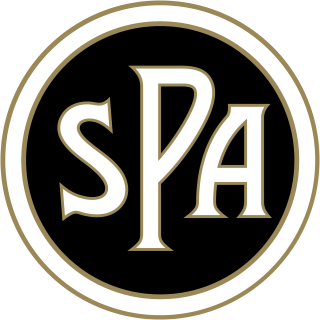
S.P.A. was an Italian automobile, military vehicle and aero-engine manufacturer founded in Turin by Matteo Ceirano and Michele Ansaldi. It was active between 1906 and 1926. In 1908, it merged with Fabbrica Ligure Automobili Genova (FLAG) and the new company, Società Ligure Piemontese Automobili, was headquartered in Genoa while manufacturing in Turin.

Sunbeam Motor Car Company Limited was a British automobile manufacturer in operation between 1905 and 1934. Its works were at Moorfields in Blakenhall, a suburb of Wolverhampton in Staffordshire, now West Midlands. The Sunbeam name had originally been registered by John Marston in 1888 for his bicycle manufacturing business. Sunbeam motor car manufacture began in 1901. The motor business was sold to a newly incorporated Sunbeam Motor Car Company Limited in 1905 to separate it from Marston's pedal bicycle business; Sunbeam motorcycles were not made until 1912.
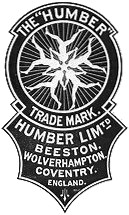
Humber Limited was a British manufacturer of bicycles, motorcycles, and cars, incorporated and listed on the stock exchange in 1887. It took the name "Humber & Co Limited" because of the high reputation of the products of one of the constituent businesses that had belonged to Thomas Humber. A financial reconstruction in 1899 transferred its business to Humber Limited.
The Lanchester Motor Company Limited was a British car manufacturer in active trade between 1899 and 1955. Though the Lanchester Motor Company Limited is still registered as an active company and accounts are filed each year, the marque has been dormant since. As of 2014 it is marked as "non-trading".

Wolseley Motors Limited was a British motor vehicle manufacturer founded in early 1901 by the Vickers Armaments in conjunction with Herbert Austin. It initially made a full range, topped by large luxury cars, and dominated the market in the Edwardian era. The Vickers brothers died and, without their guidance, Wolseley expanded rapidly after the war, manufacturing 12,000 cars in 1921, and remained the biggest motor manufacturer in Britain.
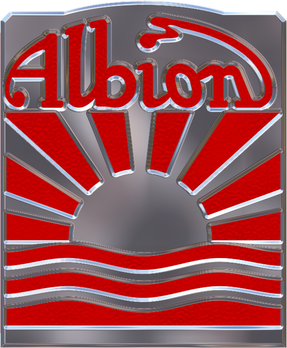
Albion Motors was a Scottish automobile and commercial vehicle manufacturer.

Clyno Engineering Company, later Clyno Engineering Company (1922) Ltd, was a motorcycle and car manufacturer that operated in Thrapston from 1909 to 1910 and then in Wolverhampton from 1910 to 1929. During this time they produced over 15,000 motorcycles and between 36,000 and 40,000 cars, at one point becoming Britain's third largest car manufacturer.

Bean Cars was a brand of motor vehicles made in England by A Harper Sons & Bean, Ltd at factories in Dudley, Worcestershire, and Coseley, Staffordshire. The company began making cars in 1919 and diversified into light commercial vehicles in 1924. For a few years in the early 1920s Bean outsold Austin and Morris.

The Vulcan Motor and Engineering Company Limited, of Southport, England, made cars from 1902 until 1928 and commercial vehicles from 1914 until 1953.

Guy Motors was a Wolverhampton-based vehicle manufacturer that produced cars, lorries, buses and trolleybuses. The company was founded by Sydney S. Guy (1885–1971) who was born in Kings Heath, Birmingham. Guy Motors operated out of its Fallings Park factory from 1914 to 1982, playing an important role in the development of the British motor industry.
The Calthorpe Motor Company based in Bordesley Green, Birmingham, England, made a range of cars, motorcycles and bicycles from 1904 to 1932.

Villiers Engineering was a manufacturer of motorcycles and cycle parts, and an engineering company based in Villiers Street, Wolverhampton, England.

Sheffield-Simplex was a British car and motorcycle manufacturer operating from 1907 to 1920 based in Sheffield, Yorkshire, and Kingston upon Thames, Surrey.

The Star Motor Company was a British car and commercial vehicle maker based in Wolverhampton and active from 1898 to 1932. At its peak Star was the UK's sixth largest car manufacturer and produced around 1000 cars a year.
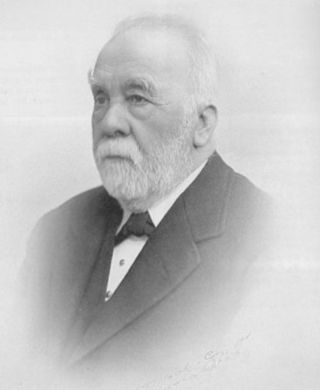
John Marston (1836–1918) was a successful Victorian bicycle, motorcycle and car manufacturer and founder of the Sunbeam company of Wolverhampton. His company was also one of the country's largest manufacturers of japanware and he was responsible for building 'Seagull' outboard engines for marine use and also for starting the Villiers engineering company. He was Mayor of Wolverhampton for two consecutive years and died in 1918 aged 82.

Société des Automobiles Bellanger Frères was a French automobile manufacturer between 1912 and 1925. The cars were the brainchild of Robert Bellinger (1884-1966), who had previously sold Delaunay-Belleville vehicles.

The Clydesdale Motor Truck Company was a motor company that existed from 1917 to 1939 with headquarters in Clyde, Ohio. Initially, they made military trucks for World War I. Military contracts continued to be a large part of their business after the war, but they also sold into many other markets: general haulage, farming, and specialized vehicles such as fire trucks. They survived the Wall Street crash of 1929 and the Great Depression, but increasingly struggling, they were wound up in 1939.


















